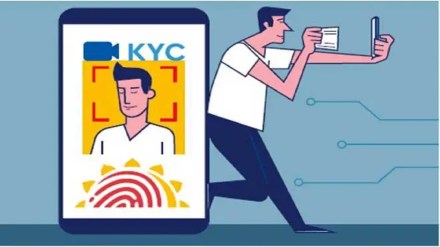The Financial Stability and Development Council has decided to implement a uniform know-your-customer (KYC) system to verify customers across the financial sector.
Saikat Neogi explains how it will help in reducing paperwork, time and cost overruns for customers as well as financial institutions
l Seamless KYC to help all stakeholders
The Financial Stability and Development Council (FSDC), chaired by finance minister Nirmala Sitharaman, in its meeting has decided to implement a uniform know-your-customer (KYC) system to verify customers, inter-usability of KYC records across the financial sector, and simplification and digitalisation of the KYC process.
A seamless KYC will eliminate the requirement for investors to produce KYC documents multiple times and get them verified when opening accounts with different financial intermediaries such as banks, insurance companies, asset management companies, stock brokers, depository participants, etc. For the intermediaries, it will reduce their costs substantially by avoiding multiplicity of registration and data upkeep. Seamless KYC will simplify the customer onboarding by reducing the turnaround time to acquire new customers.
l Multiple verifications in the current KYC system
KYC establishes an investor’s identity and address through documents such as permanent account number (PAN), Aadhaar card, passport, driving licence, etc. In fact, KYC compliance is mandatory under the Prevention of Money Laundering Act, 2002.
At present, separate KYCs are needed for different financial products such as opening a bank account, investing in mutual funds, buying a life cover or investing in retirement-savings funds. Multiple KYCs, regular updates and even the exact specifications often prove to be a deterrent for new investors. While the Centre had launched Central KYC Records Registry (CKYCR) in 2016 to eliminate the need to do repeated KYC for investing across financial assets, it has been limited only to the capital markets. In fact, while dealing in securities markets, once KYC is done through a Securities and Exchange Board of India (Sebi) registered intermediary such as a broker, depository participant or mutual fund, customers do not have to undergo the same process again for fresh investments.
l How centralised KYC works
The CKYCR is a centralised repository of KYC records of customers in the financial sector with uniform KYC norms and inter-usability of the KYC records. The government authorised the Central Registry of Securitisation Asset Reconstruction and Security Interest of India (CERSAI) to perform the functions of the CKYCR.
This centralised registry receives, stores, safeguards and retrieves the KYC records of a customer in a digitally secure electronic format. Customers have to submit their KYC details only once with any of the reporting entities of the Reserve Bank of India, Sebi, Insurance Regulatory and Development Authority of India, Pension Fund Regulatory and Development Authority at the time of opening an account. Once the information is registered, customers will receive a 14-digit KYC Identification Number that can be used at any financial institution registered with CERSAI.
Financial institutions can access the CKYCR database to retrieve the KYC records of customers while onboarding them. In case of any changes in the details of a customer, the reporting entity will initiate a centralised KYC (CKYC) update after taking the latest KYC record of the customer.
l Challenges for the centralised KYC
Navigating data privacy and security issues will be a major challenge for CKYCR. Any breach in security can lead to misuse of personal data as millions of KYC details are stored on a single database. System failures and cyber attacks can jeopardise the entire KYC verification process for all financial institutions and millions of customers. These concerns have even been raised by the central bank, which has flagged customers onboarded through e-KYC as high-risk ones. Even if a bank uses CKYC to onboard a customer, they still have to use video KYC or physical check to authenticate certain high-risk customers. For these customers, the verification has to be done periodically to reduce risks.
So the entire process increases the cost of doing KYC for the lenders. Cybersecurity experts say the CKYC search asks for the customer’s PAN and date of birth. These details are easily available and can be misused by fraudsters. So, issues related to identity frauds and data misuse will have to be addressed before CKYC is implemented across all financial intermediaries.
